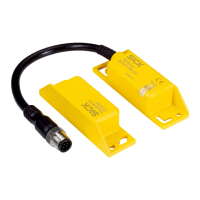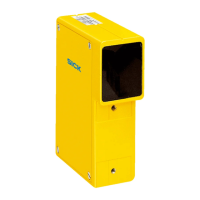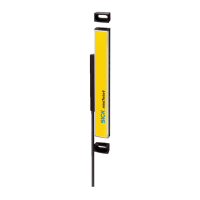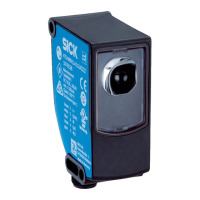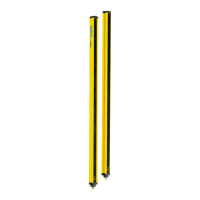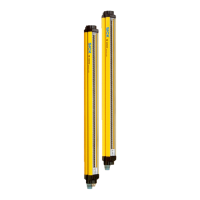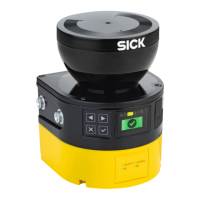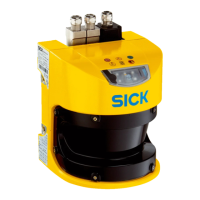Minimum requirements for the regular thorough check
T
he following thorough checks must be carried out at least once a year:
•
"Thorough check of the principal function of the protective device", page 45
•
Test of the detection capability (resolution), see "Thorough check of the area to be
protected", page 46
Recommendations for further thorough checks
In many cases, depending on the application conditions, the risk assessment of the
machine determines that further thorough checks are required or that some thorough
checks must take place more frequently.
In many cases, it makes sense to carry out the following thorough checks together with
the regular thorough check:
•
"Visual check of the machine and the protective device", page 47
•
"Test of the contour detection field", page 46
•
Test of the relevant points on the checklist, see "Checklist for initial commissioning
and commissioning", page 131
In many cases, it makes sense to carry out the following thorough checks daily:
•
"Visual check of the machine and the protective device", page 47
•
"Thorough check of the principal function of the protective device", page 45
Complementary information
If a t
horough check reveals a fault, the machine should be shut down immediately. In
this case, the mounting and electrical installation of the safety laser scanner must be
checked by appropriately qualified safety personnel.
4.5.3 Notes on the tests
Thorough check of the principal function of the protective device
R
ecommended approach:
b
Observe display and status LEDs. A fault has occurred if at least one LED does not
light up permanently when the machine is switched on.
b
Test the function of the protective device. To do this, trigger the protective function
once and observe the safety output’s reaction using the reaction of the machine,
for example.
°
All applications: during the test, observe whether the safety laser scanner
displays the interruption of the protective field using the LEDs and/or the dis‐
play.
°
Stationary application (hazardous area protection, access protection, haz‐
ardous point protection):
•
Interrupt the protective field with the intended test object and observe
whether the machine stops.
°
Mobile application (mobile hazardous area protection):
•
Place the supplied test object in the path of the vehicle and observe
whether the vehicle stops.
OR
•
A
ctivate a protective field, which is interrupted by at least one test object
and check the expected reaction (for example by an automatic test in
the safety controller).
If the thorough check reveals a fault, the machine should be shut down immediately. In
this case, the mounting and electrical installation of the safety laser scanner must be
checked by appropriately qualified safety personnel.
PROJECT PLANNING 4
8024596/15VP/2019-11-15 | SICK O P E R A T I N G I N S T R U C T I O N S | nanoScan3 I/O
45
Subject to change without notice

